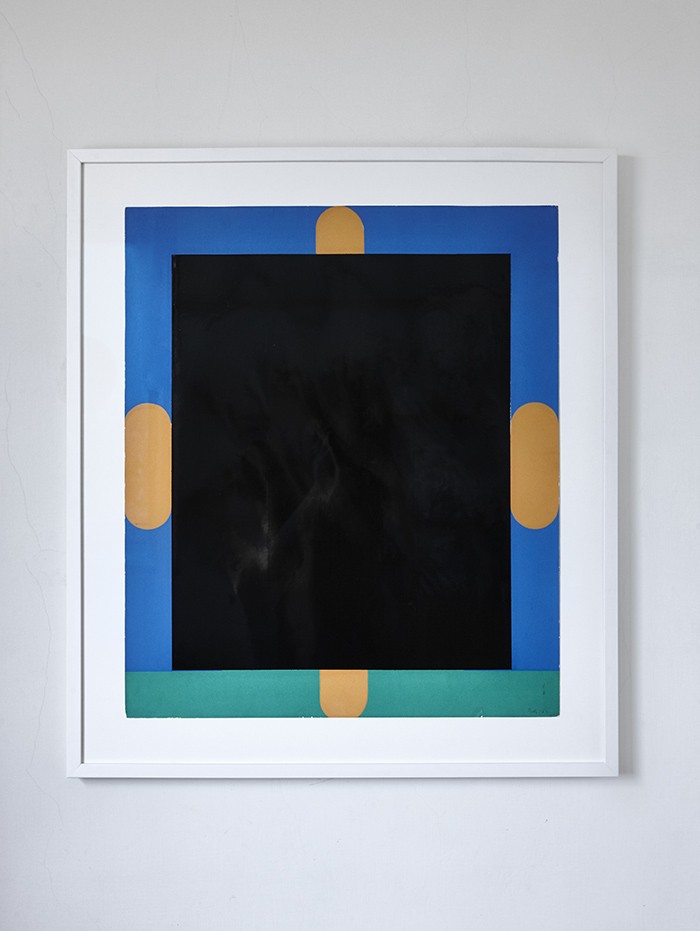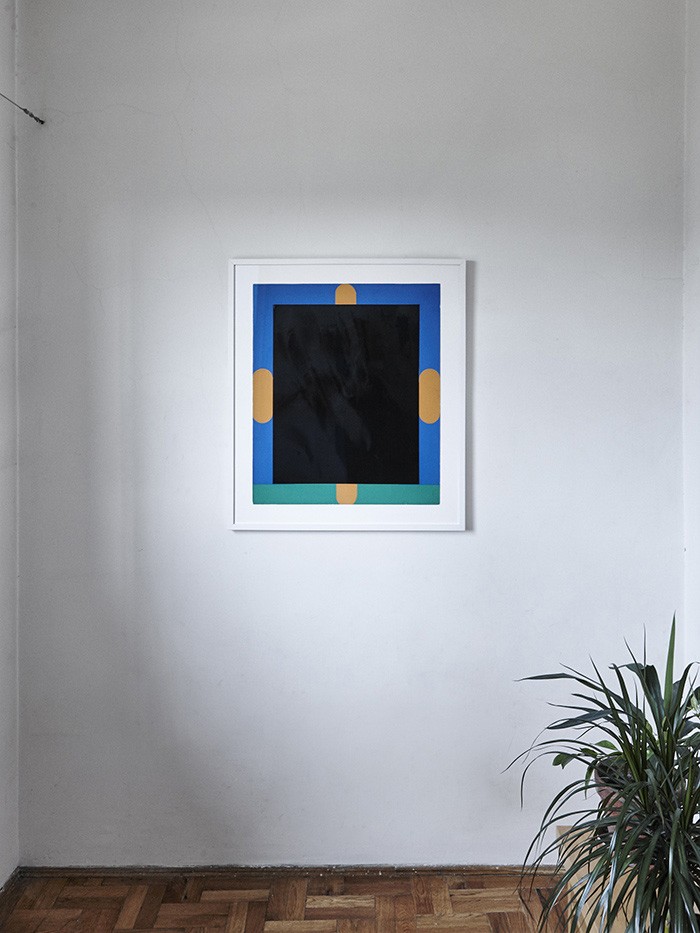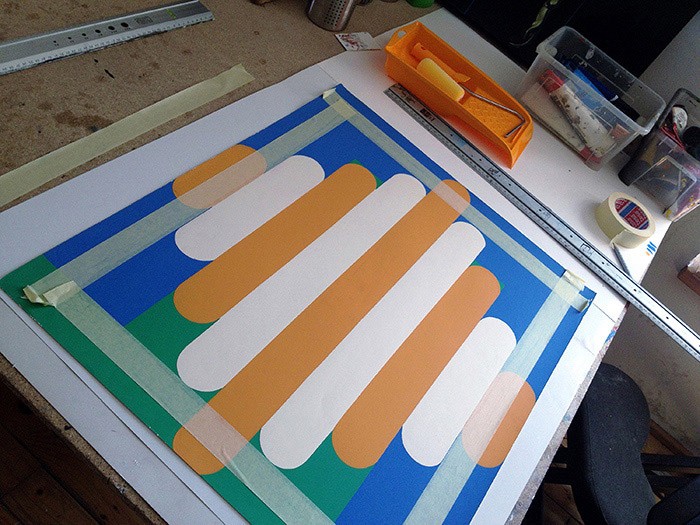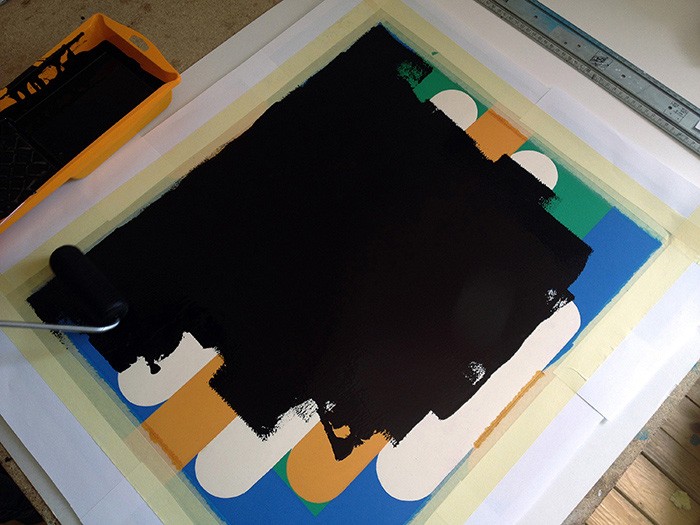enamel, frame, museum glass | 85x75 cm
original artwork: Imre Bak: Serigraph II. | 1969, serigraph paint, paper | 70x60 cm
The archetype and one of the sources of inspiration for the project was Robert Rauschenberg’s work entitled Erased de Kooning Drawing from 1953. Rauschenberg, who is regarded as a key figure of American Pop Art, contacted his friend Willem de Kooning, a master of American Abstract Expressionism, to ask if he could erase one of his drawings. With this provocative gesture, Rauschenberg announced the triumph of the new generation while simultaneously acknowledging the relevance of continuity, in other words that we inevitably construct ourselves by treading in the footsteps of our predecessors.
The artist revived this story in an interpretation of Imre Bak, one of the most significant representatives of Hungarian geometrical abstract painting and an artist who is regarded as an exemplary master. Lőrinc Borsos’s attention was drawn to Bak by this and by instances of censorship in the past that constitute the subject matter of the exhibition Red Tail Blue Pencil (part of the 1st OFF Biennale Budapest) where he was invited. An abstract painting by Imre Bak was removed from the 1967 annual exhibition of the Studio of Young Artists, in other words it was censored due to cultural political considerations. For the exhibition the artist decided to censor a work by Bak, overpainting it with Blaek.

Censored Imre Bak
photo by Máté Balázs

Censored Imre Bak
photo by Máté Balázs

